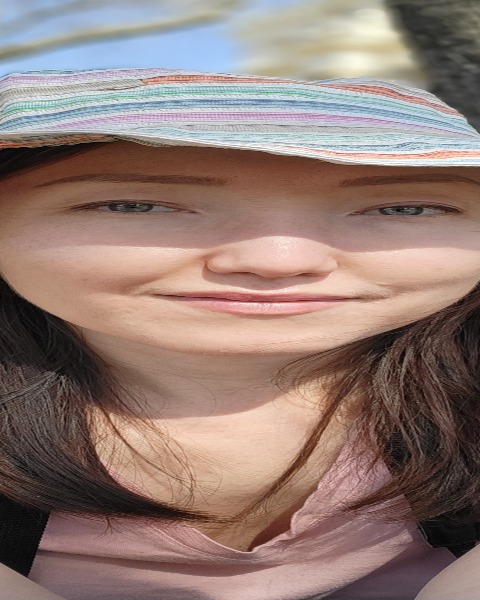Nano and Micro Technologies
Optimizing Data Processing Region of a Low-cost Optical Cavity-based Biosensor
(K-404) Optimizing Data Processing Region of a Low-cost Optical Cavity-based Biosensor

Cooper J. Morlan
Undergraduate student
Baylor University
Copperopolis, California, United States- SK
Seunghyun Kim
Principal investigator
Baylor University, United States - AH
Aidan Hagemann
PhD student
Baylor University, United States 
Marzhan Sypabekova, PhD
Postdoctoral Research Associate
Baylor University
Waco, Texas, United States- JK
Jenna N. Kleiss (she/her/hers)
Undergraduate student
Baylor University
waco, Texas, United States
Presenting Author(s)
Co-Author(s)
Introduction: Early detection of diseases such as cancer is vital to improve the chances of recovery. An optical cavity-based biosensor (OCB) is a promising platform as a portable, label-free, and affordable point-of-care biosensor for early disease detection. This sensor employs a simple optical cavity resonator structure and low-cost components for detection while utilizing a differential detection method using two laser diodes to enhance the sensitivity. To measure the intensities of both laser diodes, we built a circuit to synchronize a beam blocker that is designed to block one laser diode at a time and used a CCD camera to measure the intensities of two laser diodes sequentially. Before we conduct biosensing experiments with the OCB, we optimized the sample fabrication processes, testing setup, and data processing approach using refractive index (RI) measurements. In this presentation, we will present the testing setup for the OCB including the circuit for the sequential detection of two different laser diodes with a CCD camera and experimental results showing the relationship between the data processing region (DPR) and the limit of detection (LOD) based on RI measurements. The noise and responsivity (i.e., signal changes with the differential detection method), directly related to the LOD, are affected by the size of the DPRs. We attempted the following circular DPR areas: 93.75 um (25 pixels in diameter), 187.5 um (50 pixels), 375 um (100 pixels), and 562.5 um (150 pixels).
Materials and Methods::
Materials and Methods: A summary of the fabrication process for the optical cavity is as follows: First, two glass substrates are coated with silver via sputtering. The silver layer on the drilled substrate is patterned using the photolithography process with AZ positive photoresist. Then, spin-on glass is spin-coated and cured on both substrates. A SU8-2010 negative photoresist is used to pattern the microfluidic channel on the plain substrate. Finally, the two substrates are combined with UV glue. After fabrication of the optical cavity, we prepare a base refractive index (RI) fluid with an RI of 1.333 by mixing dimethyl sulfoxide (DMSO) with DI water. Then, four more RI fluids (1.33298, 1.33296, 1.33294, and 1.33292) are prepared using serial dilution. Next, we fill the channel with water (RI = 1.3329). Finally, we utilize a vacuum pump running at 10 µl/min to introduce 20 µl of each RI fluid into the channel. The OCB test setup is arranged as follows. Our affordable laser diodes are directed through a splitter, filter, optical cavity, and then up to our CCD camera. Figure 1(b) shows our circuit that allows for each laser to be recorded at precise times. An Arduino moves the servo motor that blocks a laser, verifies the servo’s position, and sends a signal to the hardware trigger on the camera to take a picture. A time delay of 500 milliseconds is used when the servo first arrives at a position and then used again after a picture is taken.
Results, Conclusions, and Discussions::
Results and Discussion: The intensities of two laser diodes with 880 nm and 904 nm wavelengths were measured using the OCB test setup shown in Figure 1(a) as we continuously injected different RI fluids. Two measured intensities were then used to determine the differential values to achieve an enhanced sensitivity. Figure 2 shows the average across three samples of the average differential value for each RI as well as the average across three samples of the standard deviation of all differential values for each RI. We calculated the LOD using 3.3 times the standard deviation of the baseline (noise captured while 1.33292 RI was in the channel) divided by the slope of the average differential values. The standard deviations of the baselines for 25, 50, 100, and 150 circle diameters were 4.62 E-3, 1.61 E-3, 2.25 E-3, and 2.03 E-3, respectively, while the slopes were 1804.5, 1538.4, 1280.1, and 974.5, respectively. Based on them, the LODs were determined to be 8.441 E-6 RIU for 25 pixels, 3.460 E-6 RIU for 50 pixels, 5.809 E-6 RIU for 100 pixels, and 6.872 E-6 RIU for 150 pixels.
Conclusions: The OCB test setup to sequentially detect the intensities of two laser diodes with a CCD camera was successfully constructed. Based on the RI measurements, the optimal DPR was determined to be an area with a diameter of 50 pixels. It showed the best LOD of 3.460 E-6 RIU. The slope appears to increase steadily as the DPR size decreases. The noise of the differential values appears to follow a similar though less linear trend, with dramatic increases below 50 pixels. Noise played the largest role since the worst noise value was larger than our choice by a factor of 2.86 while the slope of our choice was larger by a factor of only 1.58. Based on the testing setup and the optimal DPR, we were able to successfully demonstrate our OCB for the bulk RI detection with a LOD that is comparable to other highly sensitive and expensive biosensors.
Acknowledgements (Optional): :
Funding: Research reported in this presentation was supported by NIGMS of the National Institute of Health under award number R15GM146233.
References (Optional): :
